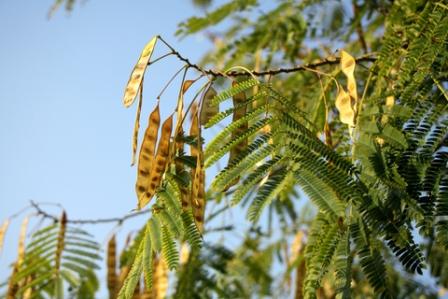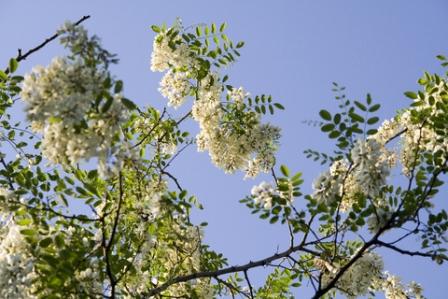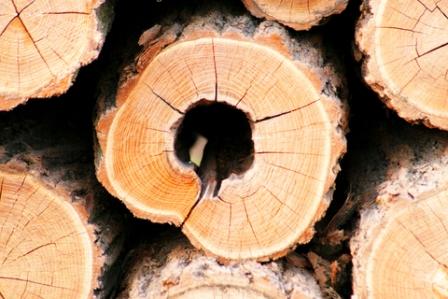Firewood Types: Black Locust
Firewood Types : Black Locust, also known as False Acacia, is a native North American tree which has some outstanding properties both as lumber and black locust firewood.
Black Locust firewood is incredibly dense, similar in energy density to anthracite coal, and burns hot and long with a low flame. It has an undeserved reputatation for being "poor timber" as most plantations of false acacia suffer from boring beetle infestations. The logs are often riddled with hole and flaws, but if you can get hold of a specimen in good condition it can be worked well to make very durable building timber for use in extreme conditions or heat and moisture.
Black Locust Firewood Identification
I spent a long time hearing about black locust firewood before working out what the tree looked like - when I finally saw a picture of one I recognised it immediately, as it was imported to Europe many many years ago. In fact, a few months later we worked out that one of the trees in my parents garden was actually a locust - the leaves and flowers were so high that it we hadn't ever closely looked at it.
The seed pods of the false acacia look a lot like thin pea pods, which when you learn that it is a member of the same family, the legumes, is not suprising. Also in common with the other legumes Black Locust is nitrogen fixing - nodules on its roots extract nitrogen from the air and turn them into nitrates that the plant can use as fertiliser. This makes these trees excellent candidates for planting on poor quality or otherwise damaged land as they grow strongly where other trees struggle.
Remember to check back to our main page on firewood types for more info...
The trees propagate by suckering - sending roots under ground to make new shoots away from the main plant - and can rapidly spread beyond the area originally intended. The stems respond exceptionally well to coppicing and a crop of usable timber for black locust firewood can be harvested around once every ten years.
Black Locust Firewood - Toxicity
Despite the similarities with the pea family most parts of the plant, with the exception of the flowers, appear to be poisonous to both humans and animals when consumed. For the most part people are not likely to eat them, but be aware of livestock paddocked near these trees, and small children who might be tempted by the pea-like pods.
The flowers, which grow in abundance, normally flower in May or June but only for a short period of around 10 days or so. While the rest of the plant is considered poisonous the flowers are often picked and cooked. Traditional recipes include fritters and floral wines!
Black Locust Beetle Damage
If it were not for the prevalence of boring beetles affecting black locust plantations this would undoubtedly be one of the foremost timber crops possible to grow. It has the hardness of mahogany, grows rapidly and has outstanding resistance to both rot and varying temperatures.
It is used in highly demanding settings, such as sauna and steam room flooring, in boat building and in fence posts. It has an unusual yellow/green colour which makes for striking furniture and flooring.
Unfortunately, as you can see in the picture below, a lot of the timber becomes unusable and brittle, sometimes splintering apart as the trees hit the ground.
While this is bad for the timber industry it can be good for people with wood burning stoves - black locust is regarded as very low value and logs can often be acquired cheaply. When you do get hold of some treasure them, the will be a joy to burn!
Firewood Types: Black Locust Overall
The negative for wood workers are all positives for wood burners - black locust is, aside from a propensity to spit, the perfect firewood and a few well seasoned cords of it will see you through the very worst of winter's weather. Just be aware that it can be hard to get going and is best added to a fire of softer wood once the stove is up to temperature.



